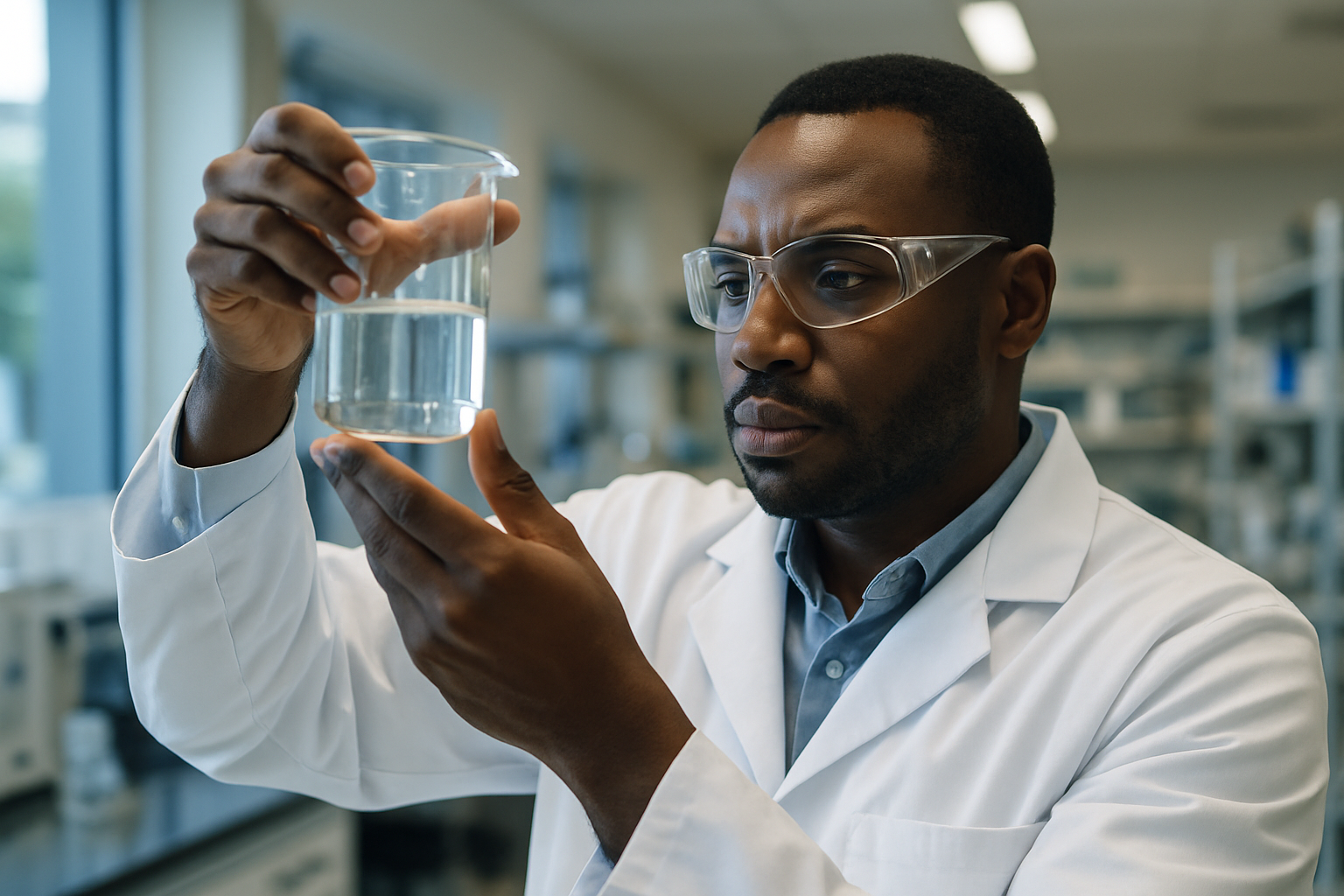The global push towards electrification has undeniably accelerated, with electric vehicles (EVs) and renewable energy storage systems becoming increasingly prevalent. However, this surge in demand also presents a formidable challenge: the impending wave of end-of-life lithium-ion batteries. Traditional recycling methods often involve energy-intensive processes or harsh chemicals, typically yielding lithium carbonate which then requires further refinement into the more desirable lithium hydroxide. This multi-step process has historically hindered the economic and environmental viability of widespread battery recycling.
Fortunately, groundbreaking innovations are now paving the way for a more sustainable and efficient future. Recent advancements in battery recycling technologies promise to revolutionize how we recover critical materials, particularly by directly extracting battery-ready lithium hydroxide from dead cells with unprecedented purity and environmental benefits.
The Growing Imperative for Sustainable Battery Recycling
The proliferation of lithium-ion batteries, while crucial for a greener future, creates a significant waste stream. It’s estimated that only 5% of lithium batteries are currently recycled. The materials within these batteries, including lithium, cobalt, nickel, and manganese, are valuable but can pose environmental hazards if not managed properly. Conventional mining and refining processes for virgin lithium are energy-intensive, consume vast amounts of water, and generate substantial greenhouse gas emissions. Recycling, in contrast, offers a viable alternative with significantly reduced environmental impact. Studies indicate that lithium battery recycling emits less than half the greenhouse gases of traditional mining processes and uses only a quarter of the water and energy.
The economic imperative is also clear. Recycled battery materials can meet a substantial portion of future demand, with estimates suggesting recycled lithium-ion battery material could fulfill one-third of the US’s cathode material needs by 2030. Direct recovery of high-purity materials, such as lithium hydroxide, further enhances the economic attractiveness of recycling by shortening the supply chain and reducing processing costs.
A Novel Approach to Lithium Recovery: The Electrochemical Advantage
A significant breakthrough comes from engineers at Rice University, who have developed an innovative electrochemical reactor designed to directly extract high-purity lithium hydroxide from used EV battery cathodes. This method bypasses the need for harsh chemicals or intensive processing typically associated with converting recycled lithium carbonate into lithium hydroxide.
How the New Method Works
The Rice University team’s “recharge-to-recycle” system leverages the fundamental chemistry of a charging battery. Instead of relying on smelting or acid-leaching shredded battery material (known as “black mass”), the process applies an electrical current to waste cathode materials. This action coaxes lithium ions out of the cathode and into a flowing stream of water, where they combine with hydroxide to form high-purity lithium hydroxide.
- Recharging the Cathode: The spent cathode material is “recharged” in an electrochemical reactor, causing lithium ions to migrate out.
- Lithium Ion Migration: These lithium ions move across a thin membrane into a water stream.
- Hydroxide Formation: Simultaneously, at the counter electrode, water molecules are split to generate hydroxide ions.
- Direct Lithium Hydroxide Production: The lithium and hydroxide ions combine in the water to form a pure solution of lithium hydroxide, eliminating the need for strong acids or additional chemicals.
This system has demonstrated impressive results, producing lithium hydroxide at over 99% purity, making it directly suitable for battery manufacturing. It maintained a nearly 90% lithium recovery rate over 1000 hours of operation and proved energy efficient, consuming significantly less energy than conventional acid-leaching methods. The technique also works across various battery chemistries, including lithium iron phosphate (LFP), lithium manganese oxide, and nickel-manganese-cobalt (NMC) blends.
Advantages Over Conventional Recycling
Traditional methods for lithium-ion battery recycling typically fall into a few categories:
- Pyrometallurgy: This high-temperature process melts batteries in a furnace to extract valuable metals, but it is energy-intensive and often leads to the loss of lithium into slag. It also generates harmful gases.
- Hydrometallurgy: This chemical recycling process uses acids or other solvents to dissolve metals from spent batteries. While it can recover various metals, it often produces metal salts (like lithium carbonate) that require further processing to become battery-grade lithium hydroxide, adding steps, energy, and waste.
- Direct Recycling: This involves physically dismantling and reusing cathode materials, but it requires precise separation and can be labor-intensive.
The new electrochemical method offers several key advantages:
- High Purity and Direct Production: It directly yields high-purity lithium hydroxide (over 99%), bypassing intermediate conversion steps and shortening the path back into new batteries.
- Environmental Friendliness: It uses only electricity and water, avoiding harsh chemicals and reducing the generation of toxic byproducts and wastewater.
- Energy Efficiency: The process is significantly more energy-efficient than traditional acid-leaching methods.
- Versatility: The technique is effective across multiple common battery chemistries, enhancing its applicability in the diverse battery market.
- Cost-Effectiveness: By immediately producing the more valuable lithium hydroxide and reducing processing steps, the economics of recycling are improved.
Other Innovations in Lithium Recycling
Beyond the Rice University breakthrough, other research efforts are also contributing to the evolution of sustainable battery recycling:
- Organic Acid Leaching: Researchers at Oak Ridge National Laboratory (ORNL) have developed an environmentally friendly method using organic citric acid dissolved in ethylene glycol to efficiently separate and recover metals like cobalt and lithium from cathodes, reducing the use of hazardous inorganic acids.
- Water and CO2 Process: The U.S. Department of Energy’s Ames National Laboratory has developed BRAWS (Battery Recycling and Water Splitting) technology, which uses only water and carbon dioxide to recover nearly all lithium as lithium carbonate from anodes, producing green hydrogen as a byproduct.
- Oxalic Acid Hydrometallurgy: Chalmers University of Technology researchers have achieved 98% lithium recovery from EV batteries using oxalic acid, an organic acid, in an aqueous-based hydrometallurgical method that minimizes loss of other valuable metals.
- Electro-hydrometallurgy: Companies like Aqua Metals are developing processes that combine electrochemistry and hydrometallurgy to recover high-purity lithium hydroxide directly from black mass, emphasizing a closed-loop system that largely uses electricity and reduces waste.
- High-Purity Lithium Carbonate: Worcester Polytechnic Institute (WPI) researchers have achieved 99.79% pure lithium carbonate from spent lithium anodes using a “self-driven” aldol condensation reaction, demonstrating its viability for new cathode materials.
Looking Ahead: The Future of Sustainable Battery Recycling
The emergence of methods capable of directly yielding battery-grade lithium hydroxide from dead cells marks a pivotal moment for the circular economy. These advancements promise to significantly reduce the environmental footprint of battery production, lessen reliance on virgin material mining, and create more resilient domestic supply chains for critical minerals.
As electric vehicle adoption continues to grow and global regulations increasingly mandate higher recycling rates, these innovations will be crucial. The European Battery Regulation, for instance, requires lithium recovery rates of at least 50% by 2027 and 80% by 2031. By investing in and scaling up these cleaner, more efficient recycling technologies, the industry can ensure that the transition to clean energy is not only sustainable at the point of use but throughout the entire lifecycle of its essential components. The focus now shifts to scaling these laboratory breakthroughs to industrial levels, making high-purity recycled lithium hydroxide a cornerstone of future battery manufacturing.

